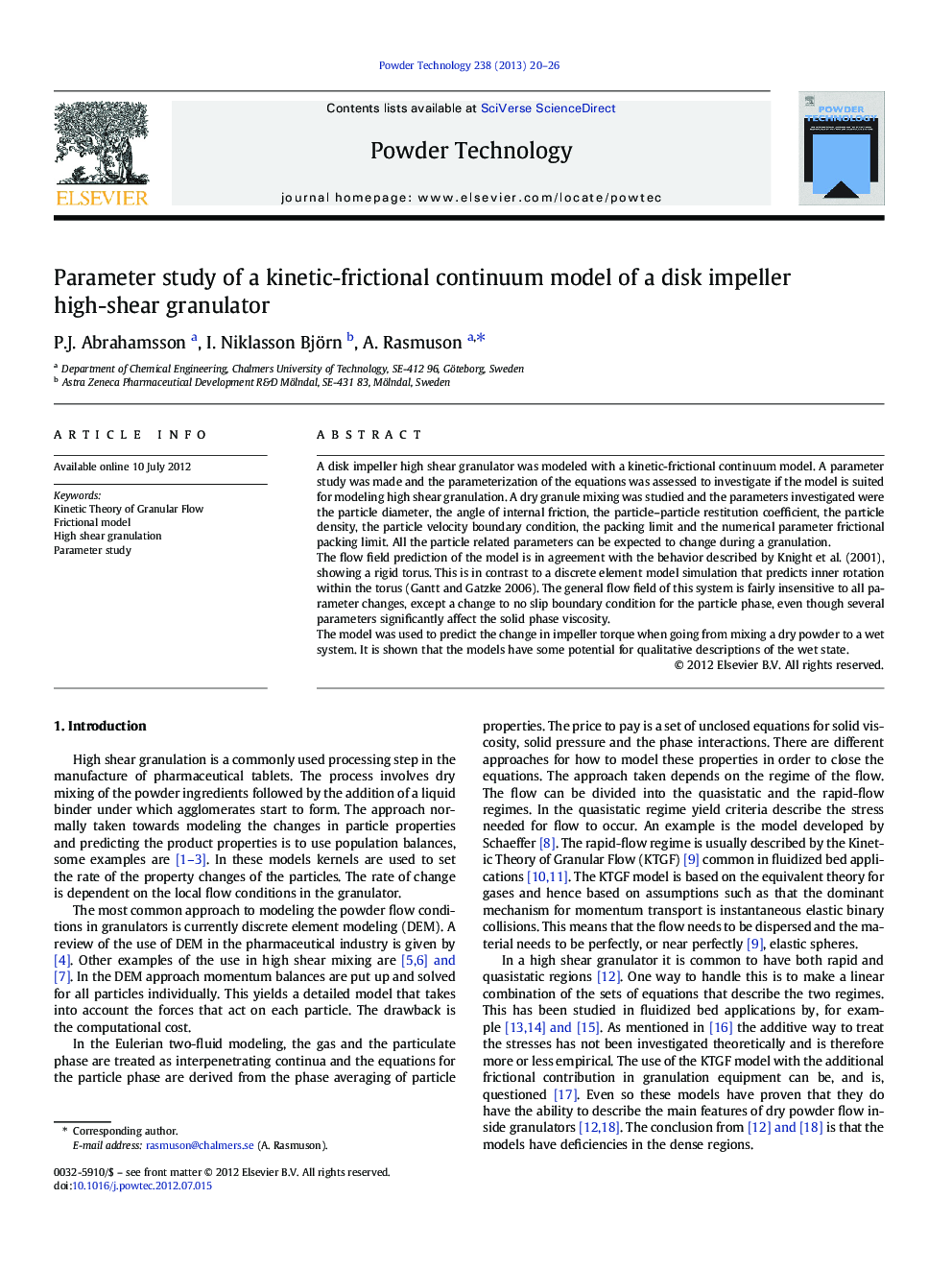| Article ID | Journal | Published Year | Pages | File Type |
|---|---|---|---|---|
| 236712 | Powder Technology | 2013 | 7 Pages |
A disk impeller high shear granulator was modeled with a kinetic-frictional continuum model. A parameter study was made and the parameterization of the equations was assessed to investigate if the model is suited for modeling high shear granulation. A dry granule mixing was studied and the parameters investigated were the particle diameter, the angle of internal friction, the particle–particle restitution coefficient, the particle density, the particle velocity boundary condition, the packing limit and the numerical parameter frictional packing limit. All the particle related parameters can be expected to change during a granulation.The flow field prediction of the model is in agreement with the behavior described by Knight et al. (2001), showing a rigid torus. This is in contrast to a discrete element model simulation that predicts inner rotation within the torus (Gantt and Gatzke 2006). The general flow field of this system is fairly insensitive to all parameter changes, except a change to no slip boundary condition for the particle phase, even though several parameters significantly affect the solid phase viscosity.The model was used to predict the change in impeller torque when going from mixing a dry powder to a wet system. It is shown that the models have some potential for qualitative descriptions of the wet state.
Graphical abstractA parameter study of a kinetic–frictional continuum model was performed. The system studied was a dry granule mixing in a disk impeller high shear granulator. The general flow field of this system is sensitive only to a change to a no slip boundary condition for the particle phase. Several parameters significantly affect the solid phase viscosity.Figure optionsDownload full-size imageDownload as PowerPoint slideHighlights► The flow field in a disk impeller granulator is described with a continuum model. ► The flow field is sensitive to changes towards no slip. ► The flow field is insensitive to other parameter changes. ► The solid viscosity is sensitive to several parameters. ► Qualitative agreement was seen when going from dry to wet mixing of particles.
